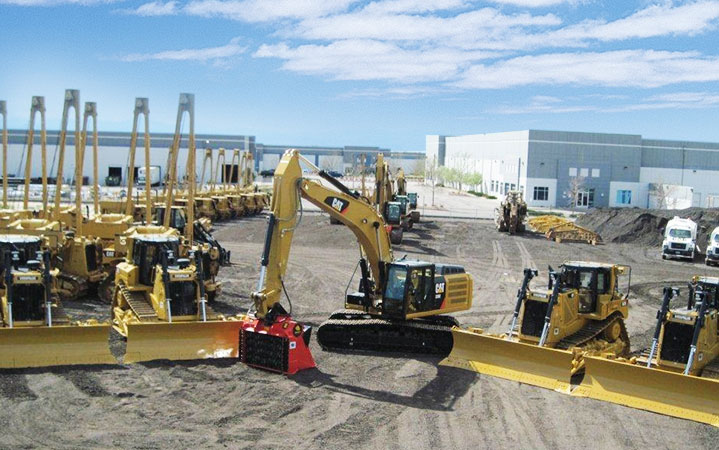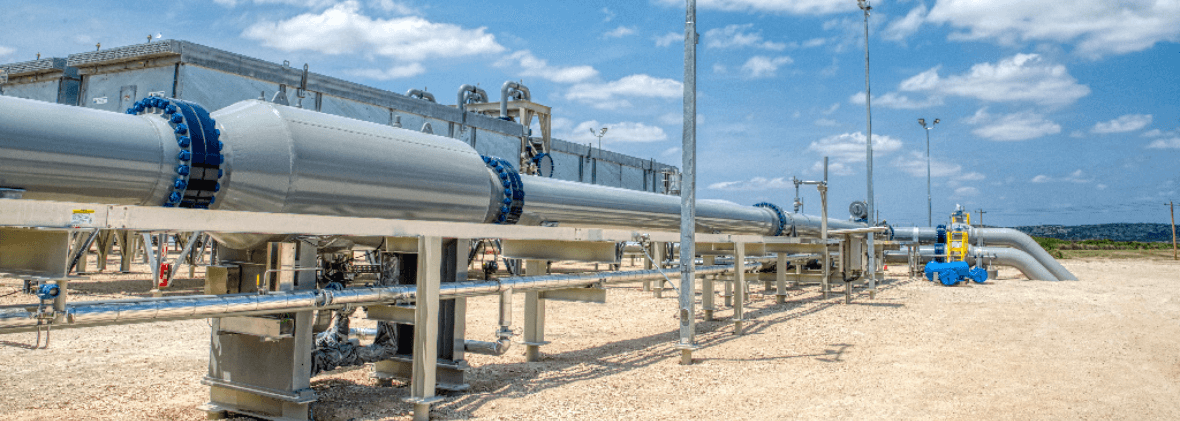How Superior Oilfield Rentals oilfield enhances safety on-site
A Comprehensive Guide to the Various Kinds Of Oil Field Equipment and Pipeline Equipment Available
The oil and gas industry relies greatly on specific equipment for effective removal and transportation. Various kinds of machinery, from piercing rigs to storage containers, play vital roles in this complicated procedure. Each tool offers unique functions that add to total functional success. Comprehending these elements is essential for any individual associated with the market. As the sector advances, so also do the technologies that sustain it. What innovations are on the perspective?

Drilling Rigs: The Backbone of Oil Exploration
Drilling rigs function as the essential machinery in the domain name of oil expedition, making it possible for companies to gain access to hydrocarbon gets buried deep below the Earth's surface area. These rigs come in different kinds, consisting of land rigs, offshore rigs, and mobile devices, each created to operate in specific atmospheres. Geared up with innovative innovation, piercing rigs can pass through geological formations with precision, guaranteeing efficient source removal. The structural integrity and functional capabilities of these rigs are critical, as they should withstand severe conditions and substantial pressures. Moreover, the choice of a drilling rig affects the overall task price and timeline, making it an important consideration for oil business seeking to optimize their expedition initiatives and take full advantage of performance in their procedures.
Pumps: Necessary for Fluid Motion
In the oil removal process, the role of pumps is significant, facilitating the activity of fluids throughout various stages of manufacturing. Pumps are important for transferring petroleum, water, and various other liquids from below ground storage tanks to the surface area and afterwards with pipes to refineries. They can be found in various types, consisting of centrifugal, positive displacement, and completely submersible pumps, each serving specific objectives based on the liquid attributes and functional requirements. Centrifugal pumps are typically used for their efficiency in high-flow applications, while favorable displacement pumps succeed in taking care of thick liquids. The option of pump impacts overall performance, operational safety and security, and maintenance prices. Correct choice and upkeep of pumps are important for optimizing production and minimizing downtime in oil area procedures.
Valves: Managing Flow and Pressure

Valves play an essential function in managing the circulation and pressure of liquids within oil areas and pipes. Different types of valves offer distinctive applications, each designed to accomplish specific features essential for efficient procedure - Superior Rentals reviews. Comprehending the characteristics and uses of these valves is important for enhancing system efficiency and safety
Kinds of Valves
Vital components in oil field procedures, shutoffs play a critical duty in managing the flow and pressure of liquids within pipes and tools. Various kinds of valves are utilized to satisfy the diverse demands of oil and gas production. Typical types consist of gate shutoffs, which provide a straight-line circulation and minimal stress decrease; world valves, understood for their strangling capacities; and ball valves, identified for their quick on/off control. Furthermore, check shutoffs avoid heartburn, while butterfly valves use a light-weight option for managing circulation. Each shutoff kind is designed with certain products and configurations to withstand the harsh conditions frequently found in oil areas, ensuring reliability and efficiency in operations. Understanding these kinds is crucial for reliable system monitoring.
Valve Applications and Functions
While various kinds of valves serve distinct functions, their main applications focus on managing flow and stress within oil and gas systems. Shutoffs such as gateway, globe, and round shutoffs control liquid activity, guaranteeing peak performance and safety and security. Gate valves are typically utilized for on/off control, giving marginal circulation resistance. Globe shutoffs, on the other look at here hand, offer precise circulation regulation, making them suitable for strangling applications. Ball shutoffs are favored for their quick operation and limited securing abilities. In enhancement, pressure safety valve are vital for avoiding system overpressure, protecting tools integrity. Generally, the proper choice and application of shutoffs boost operational effectiveness, making certain the trustworthy transport of oil and gas with pipes and handling centers.
Compressors: Enhancing Gas Transportation
Compressors play an essential duty in the reliable transport of all-natural gas, ensuring that it moves smoothly with pipelines over cross countries. These gadgets increase the stress of all-natural gas, allowing it to get rid of rubbing and altitude changes within the pipeline system. Additionally, compressors facilitate the balancing of supply and demand, fitting variations in usage and manufacturing rates. Different kinds of compressors are employed in the sector, including centrifugal, reciprocating, and rotary screw compressors, each offering distinct benefits based upon the operational requirements. Regular maintenance of these compressors is vital to maximize effectiveness and decrease downtime, eventually contributing to a trustworthy gas transport network. Their essential feature highlights the value of compressors in the overall oil and gas framework.
Storage Tanks: Safe and Effective Fluid Monitoring
Effective transportation of gas counts on various sustaining systems, among which is the appropriate monitoring of tank. These tanks play a crucial duty in safely having liquids, ensuring that functional effectiveness is kept while reducing environmental risks. Constructed from durable products, they are developed to stand up to high stress and harsh aspects. Effectively sized and purposefully located, tank help with the smooth circulation of natural gas and various other fluids, protecting against traffic jams in supply chains. Normal upkeep and surveillance are imperative to identify leakages or architectural issues, promoting security and compliance with governing requirements. Inevitably, the effective management of tank is important for the overall honesty fix a leak plumbing and dependability of the oil and gas sector's liquid handling systems.
Pipeline Solutions: Framework for Transportation
Pipeline systems serve as the foundation of the oil and gas market, assisting in the reliable transportation of hydrocarbons over huge ranges. These systems are composed of different parts, including pipes, valves, pumps, and compressors, all diligently designed to guarantee seamless circulation. The materials made use of in pipeline building, often steel or high-density polyethylene, are picked for durability and resistance to corrosion. Pipeline networks can cover across land and water, linking manufacturing sites to refineries and distribution centers. Furthermore, progressed innovation makes it possible for real-time monitoring of circulation prices and stress levels, enhancing operational effectiveness. The strategic placement of these pipes minimizes environmental impact while making the most of resource access, therefore playing an essential function in meeting energy demands worldwide.
Safety Equipment: Ensuring Worker and Environmental Management
The procedure of pipeline systems, while vital for power transport, likewise provides substantial security difficulties for employees and the environment. Safety and security devices plays a significant duty in reducing these risks. Individual safety tools (PPE) such as safety helmets, gloves, and non-slip shoes safeguards employees from physical dangers. Furthermore, gas discovery systems keep track of for leakages, guaranteeing that unsafe compounds do not posture a risk to personnel or the bordering environment. Emergency situation shutdown systems are necessary for rapidly get more stopping procedures during a crisis, protecting against potential calamities. Spill containment products, consisting of absorbents and obstacles, are basic for decreasing environmental impact. On the whole, purchasing comprehensive safety devices is critical for preserving functional honesty and securing both employees and the setting in the oil and gas market.

Regularly Asked Concerns
Exactly how Do I Pick the Right Oil Field Equipment for My Project?
Picking the appropriate oil area devices entails assessing project specifications, budget constraints, and functional demands. Take into consideration elements such as tools dependability, compatibility with existing systems, and the vendor's reputation to assure peak performance and safety and security.
What Are the Upkeep Requirements for Oil Field Equipment?
Upkeep needs for oil area tools consist of regular examinations, lubrication, and timely repair services. Operators must also abide by supplier guidelines, monitor efficiency metrics, and assurance compliance with security guidelines to enhance long life and effectiveness.

How Can I Guarantee Conformity With Environmental Laws?
To assure conformity with environmental laws, business need to conduct regular audits, implement finest techniques, buy training, keep correct documents, and remain updated on legislation (Superior Oilfield pipeline equipment rentals). Cooperation with environmental agencies can likewise enhance adherence to policies
What Is the Ordinary Life-span of Pipeline Equipment?
The ordinary life expectancy of pipeline equipment normally ranges from 20 to 50 years, depending upon elements such as material top quality, environmental problems, and upkeep techniques. Normal assessments can considerably influence longevity and functional efficiency.
Just how Do I Securely Move Oil Field Equipment to Remote Locations?
Transporting oil field tools to remote locations calls for cautious preparation, including path evaluation, protecting licenses, making use of suitable vehicles, and making sure safety protocols are followed. Proper training and communication among crews are vital for successful transportation.